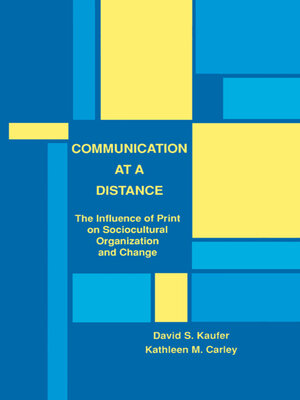Communication at a Distance
ebook ∣ The Influence of Print on Sociocultural Organization and Change · Routledge Communication Series
By David S. Kaufer

Sign up to save your library
With an OverDrive account, you can save your favorite libraries for at-a-glance information about availability. Find out more about OverDrive accounts.
Find this title in Libby, the library reading app by OverDrive.



Search for a digital library with this title
Title found at these libraries:
| Library Name | Distance |
|---|---|
| Loading... |
This book bridges an important gap between two major approaches to mass communication — historical and social scientific. To do so, it employs a theory of communication that unifies social, cultural and technological concerns into a systematic and formal framework that is then used to examine the impact of print within the larger socio-cultural context and across multiple historical contexts. The authors integrate historical studies and more abstract formal representations, achieving a set of logically coherent and well-delimited hypotheses that invite further exploration, both historically and experimentally.
A second gap that the book addresses is in the area of formal models of communication and diffusion. Such models typically assume a homogeneous population and a communication whose message is abstracted from the complexities of language processing. In contrast, the model presented in this book treats the population as heterogeneous and communications as potentially variable in their content as they move across speakers or readers.
Written to address and overcome many of the disciplinary divisions that have prevented the study of print from being approached from the perspective of a unified theory, this book employs a focused interdisciplinary position that encompasses several domains. It shows the underlying compatibility between cognitive and social theory; between the study of language and cognition and the study of technology; between the postmodern interest in the instability of meaning and the social science interest in the diffusion of information; between the effects of technology and issues of cultural homogeneity and heterogeneity. Overall, this book reveals how small, relatively non-interactive, disciplinary-specific conversations about print are usefully conceived of as part of a larger interdisciplinary inquiry.







